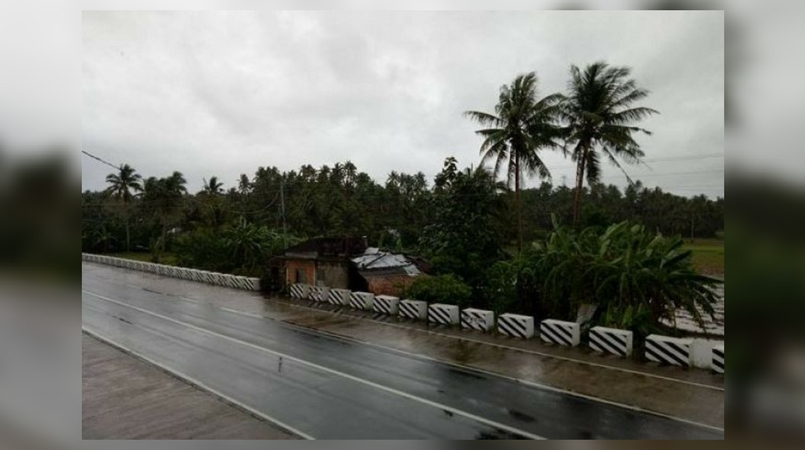
A powerful typhoon has slammed into central Philippines, where at least 200,000 people are spending their Christmas in evacuation shelters.
Nock-Ten, known locally as Typhoon Nina, brought strong winds and heavy rains and cut power and mobile networks, but there were no immediate reports of casualties, weather officials and radio reports stated.
A major road on the island of Luzon was also cut off, which charity Save the Children said might hamper aid efforts.
The storm was packing maximum sustained winds of 185 kilometres per hour and gusts of up to 255 kilometres when it made landfall over Catanduanes province, on the Bicol peninsula, which was on the highest storm alert for its arrival.
The typhoon made a second landfall over Camarines Sur province, then weakened slightly, according to the Government's weather agency.
"We continue to pray, stay positive and stay alert. Brownout in a lot of areas already," Camarines Sur Governor Miguel Luis Villafuerte said in a post on his Instagram account.
Christmas is the biggest holiday in the Philippines, making it difficult for officials to get people's attention to heed the warnings and evacuate.
Nock-Ten, which had a 500-kilometre rain band, was expected to barge westward across the mountainous southern plank of the Philippines' main island of Luzon and blow close to the capital, Manila, on Monday, before starting to exit toward the South China Sea.
"We're actually worried about families and communities who are along the path of the typhoon now," World vision employee Joy told ABC News Breakfast.
Most of the people now are in evacuation centres and everyone is still advised not to venture out.
"Since it is still too dark, we are not yet able to see the extent of damage caused by the typhoon, so everyone is advised to just stay where they are."
Heavy rainfall, destructive winds and battering waves had threatened heavily populated rural and urban regions, where the Philippine weather agency raised typhoon warnings.
Fierce winds and rain knocked down the island's power and communications, forecasters said.
Ned Olney, the Philippines' country director for Save the Children, said the typhoon was likely to hit slum areas hardest.
"It's really the rising waters in the slum areas that causes great threat to human life," he said.
"Most of the structures where people live in these areas are light wooden structures with straw roofs so this type of a storm we'd expect massive damage at the simple household level."
Villages forced to evacuate
The rotational wind speed is increasing, but the typhoon's progress across land is slowing down — meaning more time in the danger zone for locals.
Land, sea and air travel has been suspended in many areas, leaving thousands of people stranded.
Officials warned of storm surges in coastal villages, flash floods and landslides, and asked villagers to evacuate to safer grounds.
With many refusing to leave high-risk communities, some officials said they decided to carry out forced evacuations.
It is not clear how long it will take for initial damage assessments, with electricity and phone coverage likely to be knocked out for some time.
Communication lines have been cut in some areas, local radio stations reported.
In the past 65 years, seven typhoons have struck the Philippines on Christmas Day, according to the Government's weather agency.
